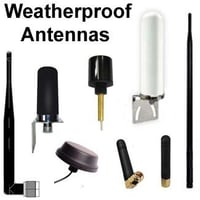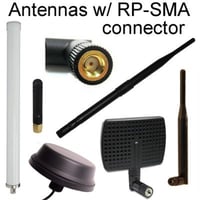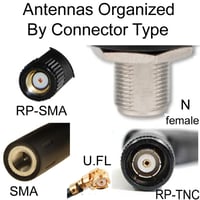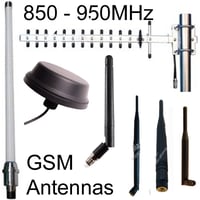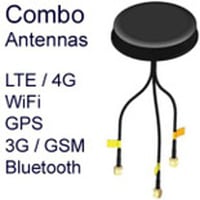Roof Mounts
J-mounts, tile roof mounts, tripod mounts, non-penetrating roof mounts, pipe masts
When it comes to ensuring the best signal quality for various communication systems, antennas and their positioning matter immensely. One popular method of positioning antennas is using roof mounts. Offering an unobstructed vantage point, roof mounts are pivotal for many users. Let's delve deeper into the intricacies of roof mounts for antennas, covering their types, key features, applications, and materials composition.
Types of Roof Mounts for Antennas
-
Tripod Mounts: Resembling a tripod, these mounts offer stability and are suitable for various antenna sizes. You have the option to use tripod mounts as a ground mount, if you don't have the option to mount an antenna at a high position such as on a roof, wall or balcony: The best ground mount option is a tripod mount with as long of a mast as it can support. Tripod mounts are exceptionally sturdy for mounting heavy antennas which demand installation height above roof lines.
-
Mast Mounts: Comprising a long pole or mast, these mounts offer extended height and are especially useful for areas with tall surrounding structures. These are also called J-mount pipe mounts.
-
Non-Penetrating Roof Mounts: Ideal for flat roofs, these mounts use weight (like concrete blocks) to stay in place without piercing the roof.
-
Eave Mounts: These are attached to the eaves or overhangs of roofs, providing an alternative mounting point without needing to pierce the main roof surface.
-
Chimney Mounts: Using straps, these mounts attach antennas to chimneys, keeping the main roof surface untouched. Easy to install on sturdy vertical chimneys, if you can avoid the antenna being exposed to heat and smoke. This can be done with a tall mast or by mounting low enough on the chimney to avoid the heat and smoke.
- Tile Roof Mounts: We have two options for large antennas and satellite dishes.
- Non-penetrating Roof Mounts: A flat platform held down by cinder blocks, used with either a pipe-mast or a J-mount as the mast.
- Attic Mounts: These types of mounts are commonly used for positioning indoor antennas. As the name suggests, they are mounted in attics. Attic mounts are fast, easy, cheap and convenient to install, especially where a strong signal exists.
Key Features
-
Stability: Given the exposed nature of roof setups, mounts should be stable enough to withstand wind and other elements.
-
Corrosion Resistance: As these mounts face the brunt of the elements, they need to resist rust and corrosion.
-
Weight Tolerance: Depending on the antenna's size, the mount should have the necessary strength to hold it.
-
Versatility: The ability to adjust the angle and height can be beneficial for obtaining optimal signals.
-
Easy Installation: A user-friendly design ensures quicker setup times and fewer complications.
Applications
-
Television Antennas: For households and establishments relying on aerial television signals, roof mounts are a go-to solution.
-
Satellite Dishes: Many homes and businesses use roof-mounted satellite dishes to catch signals for TV or internet.
-
Cellular Boosters: In areas with weak cellular signals, antennas connected to signal boosters are often placed on roofs for better reception.
-
Radio Communication: From ham radios to two-way communication setups, roof mounts are prevalent.
-
Weather Instruments: Many meteorological instruments, which often communicate data wirelessly, use antennas that are roof-mounted.
Materials Composition
Roof mounts for antennas predominantly use the following materials:
-
Galvanized Steel: Favored for its robustness and rust-resistant properties, it's a standard choice for many roof mounts.
-
Stainless Steel: Offering superior resistance to corrosion, particularly in high-saline environments, it's a preferred choice for many.
-
Aluminum: Being lightweight and resistant to rust, aluminum finds its way into many antenna mounts, especially those requiring height.
-
UV-resistant Plastics: Some components, especially in non-penetrating mounts, might be made of plastics that resist UV degradation.
Positioning Outdoor Antennas for Better Reception Using Mounts
Antennas must be positioned with the best line-of-sight option to offer better signal strength, and this usually means that the higher you can position the antenna, the better. If you have a more direct line-of-sight from a lower position, that would be the only reason to consider positioning an antenna in a lower position than the highest possible.
Outdoor antennas must be securely attached, as generally high as possible or where there is a clear line of sight, away from any interference. If the antenna is directional, it must face the right direction, i.e. pointing to the signal source (cell tower, etc) and remain firmly in position despite being exposed to harsh weather. For this to be possible, antennas must be mounted.
In conclusion, the importance of a reliable roof mount for antennas cannot be understated. Ensuring optimal reception, durability, and minimal damage to your structure, the right roof mount is integral to your antenna setup. Remember, when considering a mounting solution, taking into account the specifics of your roof, antenna, and the surrounding environment will lead to the best outcome.

